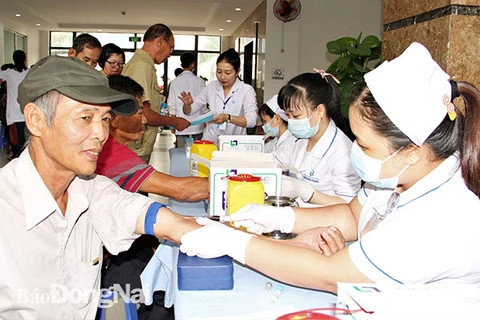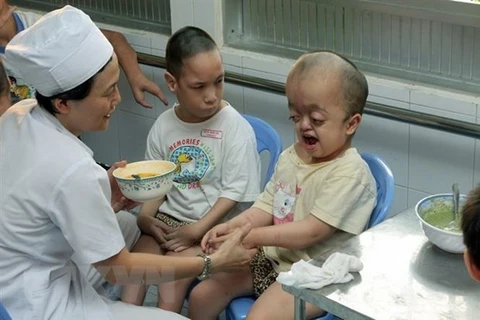Hanoi (VNA) – An online photo display and a conference took place on August 9, focusing on the Agent Orange (AO)/dioxin disaster in Vietnam and efforts to ease its consequences.
The exhibition, held at the site www.trienlamdacam.vn, revolved around the topics of the chemical toxic disaster; assistance from the Party, State and international friends; AO/dioxin victims’ fight for justice; role models of victims overcoming difficulties for better life; and Vietnam’s efforts to address the consequences of AO/dioxin.
Meanwhile, the conference saw the participation of Senior Lieutenant General Nguyen Van Rinh, Chairman of the Vietnam Association for Victims of AO/Dioxin (VAVA); Colonel Le Dinh Vu, deputy head of the Department of Military Science under the Defence Ministry; and Pham Thi Hai Ha, Deputy Director General of Department of Social Assistance under the Ministry of Labour, Invalids and Social Affairs, along with representatives from relevant agencies and AO victims.
They discussed the outcomes and orientation of the work to tackle AO/dioxin impacts on people and land, while sharing information about social organisations’ support for AO/dioxin victims and the victims’ efforts to overcome their difficulties.
They agreed that all of the activities require large resources and collaboration among authorities, people and international organisations.
The US army sprayed some 80 million litres of toxic chemicals, 61 percent of which was Agent Orange containing 366 kilograms of dioxin, over nearly one quarter of the total area of southern Vietnam from 1961 to 1971.
Preliminary statistics showed that 4.8 million Vietnamese people were exposed to AO/dioxin, and about 3 million people became victims. Tens of thousands of people have died while millions of others have suffered from cancer and other incurable diseases as consequences of exposure. Many of their offspring have also suffered from birth deformities.
Over the past years, Vietnam has invested in and raised funds for dioxin detoxification projects to clean hundreds of thousands of cubic metres of land./.
VNA

























